first square of the chessboard / second half of the chessboard
description: a concept referring to the point where an exponentially growing factor begins to have a significant economic impact on an organisation's overall business strategy
18 results
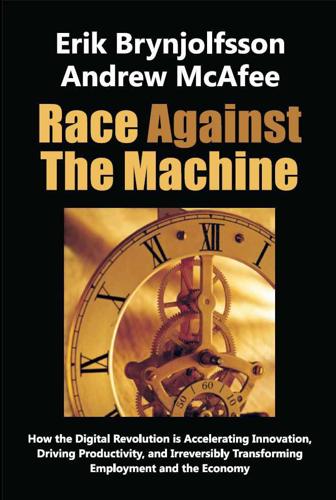
Race Against the Machine: How the Digital Revolution Is Accelerating Innovation, Driving Productivity, and Irreversibly Transforming Employment and the Economy
by
Erik Brynjolfsson
Published 23 Jan 2012
But the emperor could still remain an emperor. And the inventor could still retain his head. It was as they headed into the second half of the chessboard that at least one of them got into trouble. Kurzweil’s point is that constant doubling, reflecting exponential growth, is deceptive because it is initially unremarkable. Exponential increases initially look a lot like standard linear ones, but they’re not. As time goes by—as we move into the second half of the chessboard—exponential growth confounds our intuition and expectations. It accelerates far past linear growth, yielding Everest-sized piles of rice and computers that can accomplish previously impossible tasks.
…
So where are we in the history of business use of computers? Are we in the second half of the chessboard yet? This is an impossible question to answer precisely, of course, but a reasonable estimate yields an intriguing conclusion. The U.S. Bureau of Economic Analysis added “Information Technology” as a category of business investment in 1958, so let’s use that as our starting year. And let’s take the standard 18 months as the Moore’s Law doubling period. Thirty-two doublings then take us to 2006 and to the second half of the chessboard. Advances like the Google autonomous car, Watson the Jeopardy! champion supercomputer, and high-quality instantaneous machine translation, then, can be seen as the first examples of the kinds of digital innovations we’ll see as we move further into the second half—into the phase where exponential growth yields jaw-dropping results.
…
In one version of the story, the inventor of the game of chess shows his creation to his country’s ruler. The emperor is so delighted by the game that he allows the inventor to name his own reward. The clever man asks for a quantity of rice to be determined as follows: one grain of rice is placed on the first square of the chessboard, two grains on the second, four on the third, and so on, with each square receiving twice as many grains as the previous. The emperor agrees, thinking that this reward was too small. He eventually sees, however, that the constant doubling results in tremendously large numbers. The inventor winds up with 264-1 grains of rice, or a pile bigger than Mount Everest.

The 100-Year Life: Living and Working in an Age of Longevity
by
Lynda Gratton
and
Andrew Scott
Published 1 Jun 2016
In other words, just as computing power doubles every two years, so the number of grains of rice doubled with the move from each square. In the fable, the king soon realized that he didn’t have enough grains of rice to meet the challenge, running out before the thirtieth square (before the second half of the chessboard). To meet the inventor’s demand the king would have to provide a mountain of rice larger than Mount Everest – nearly 18.5 quintillion grains. On the first square of the chessboard there is one grain of rice, and by the 33rd square the number is 4.3 billion. The parallel with Moore’s Law is obvious. Back in 1981, Bill Gates said 640K of computer memory should be enough for anyone; thirty years later not only do computers have huge processing power, but also the increase that will happen in the next two years is enormous compared to cumulative past progress.
…
In his thought-provoking analysis, Silicon Valley entrepreneur Martin Ford remarks: ‘The threat to overall employment is that as creative destruction unfolds the destruction will fall primarily on labor-intensive businesses in traditional areas like retail and goods preparation while the creation will generate new businesses and industries that simply don’t hire many people.’10 In the words of MIT professors Erik Brynjolfsson and Andrew McAfee, ‘Computers and other digital advances are doing for mental power … what the steam engine and its descendants did for muscle power’.11 The second half of the chessboard In 1965, Intel’s Geoffrey E. Moore conjectured that the processing power of semi-conductors would double roughly every two years and, to date, this has been an extraordinarily accurate prediction. As a consequence of this exponential growth, ‘Second Machine Age’ proponents argue that we are now in the ‘second half of the chessboard’. This is a reference to a fable concerning a king in India who, bored with all his existing pastimes, set a challenge to his kingdom to come up with a better form of entertainment.
…
When this happens it will threaten a significant number of jobs in the logistics industry. Diagnosing medical conditions is another routine task which has required knowledge and pattern recognition skills that have to date proved beyond computers. However, yet again, the implications of the second half of the chessboard is that this is no longer the case. Famously IBM’s supercomputer Watson is now performing oncology diagnosis. As computing power increases, so the hollowing out of the labour market accelerates. Instead of being complementary to skilled labour, technological innovations begin to substitute for it.
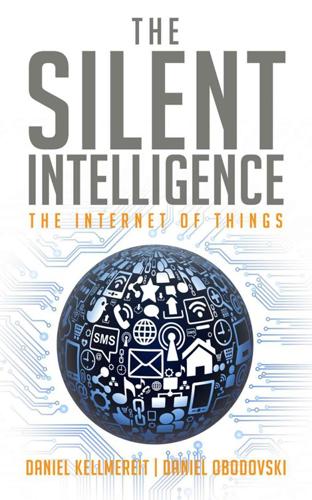
The Silent Intelligence: The Internet of Things
by
Daniel Kellmereit
and
Daniel Obodovski
Published 19 Sep 2013
In ancient China a man came to the emperor and demonstrated to him his invention of the game of chess. The emperor was so impressed by the brilliance of the man’s invention that he told the man to name his reward. The man asked for his reward in an amount of rice — that one grain be placed on the first square of the chessboard, two on the second, four on the third, and so on — doubling the number of grains on each subsequent square. Not being a very good mathematician, the emperor at first thought the reward to be too modest and directed his servants to fulfill the man’s request. By the time the rice grains filled the first half of the chessboard, the man had more than four billion rice grains — or about the harvest of one rice field.
…
But his wealth and ability to outsmart the emperor came with a price — he ended up being decapitated. In their recent book, Race Against the Machine,1 Erik Brynjolfsson and Andrew McAfee, referenced the fable of the chess and rice grains to make the point that “exponential increases initially look a lot like linear, but they are not. As time goes by — as we move into the second half of the chessboard — exponential growth confounds our intuition and expectations.” As a result, in the early stages of a project or a new technology, it’s very hard to discern whether or not something will experience exponential growth. As you will find in these next chapters, we believe this is exactly what is going to happen with the rise of the Internet of Things.

No Ordinary Disruption: The Four Global Forces Breaking All the Trends
by
Richard Dobbs
and
James Manyika
Published 12 May 2015
In their bestseller The Second Machine Age, Erik Brynjolfsson and Andrew McAfee of the Massachusetts Institute of Technology dubbed the current era the “second half of the chessboard.” Brynjolfsson and McAfee give a modern twist to an old story about the power of exponential growth. Pleased with the invention of chess, a Chinese emperor offered the inventor his choice of prizes. At the outset, the inventor asked the emperor for a single grain of rice to be placed on the first square of the chessboard, two on the second square, four on the third, and eight on the fourth. The amounts doubled with each move. The first half of the chessboard was fairly uneventful.
…
ACCELERATING INNOVATION From the first stabs at mechanization during the Industrial Revolution to the computer-driven revolution we are living through now, technological innovation has always underpinned dynamic economic change. But today is different because, as noted in the introduction, we are in the second half of the chessboard. In a process that is both gratifying and terrifying, the period between historic breakthroughs has been decreasing by orders of magnitude. More than five hundred years passed between Gutenberg’s printing press and the first computer printer. It then took only another thirty years for the 3-D printer to be invented.

Blockchain Revolution: How the Technology Behind Bitcoin Is Changing Money, Business, and the World
by
Don Tapscott
and
Alex Tapscott
Published 9 May 2016
Interview with Gavin Andresen, June 8, 2015. 71. www3.weforum.org/docs/WEF_GAC15_Technological_Tipping_Points_report_2015.pdf, 7. 72. Interview with Constance Choi, April 10, 2015. 73. The digital revolution has moved on to “the second half of the chessboard”—a clever phrase coined by the American inventor and author Ray Kurzweil. He tells a story of the emperor of China being so delighted with the game of chess that he offered the game’s inventor any reward he desired. The inventor asked for rice. “I would like one grain of rice on the first square of the chessboard, two grains of rice on the second square, four grains of rice on the third square, and so on, all the way to the last square,” he said.
…
These transformations of civilization took time, usually centuries, and were often punctuated by strife or even revolutions. Today the situation is different. Change is happening infinitely faster. More important, Moore’s law indicates that the rate of change is accelerating exponentially. We’re moving to the proverbial “second half of the chessboard” where exponential growth upon exponential growth creates the incomprehensible.73 The upshot is that our regulatory and policy infrastructures are woefully inadequate and adapting too slowly or not at all to the requirements of the digital age. The disruptions of today are moving so fast they are getting beyond the capacity of individuals and institutions to comprehend them, let alone manage their impact.
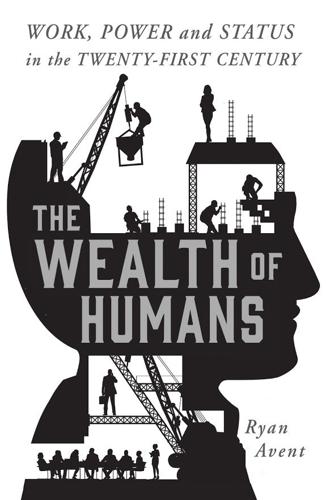
The Wealth of Humans: Work, Power, and Status in the Twenty-First Century
by
Ryan Avent
Published 20 Sep 2016
In an influential 2012 book, Race Against the Machine, two MIT scholars of technology and business, Erik Brynjolfsson and Andrew McAfee, argue that people aren’t very good at assessing the pace of exponential technological progress (for example, the repeated doubling in microchip power described by Moore’s law).11 They borrow a parable popularized by the futurist Ray Kurzweil.12 In the legend, a wise man invents the game of chess and presents it to his king. Pleased, the king allows the man to name his reward. The wise man responds that he wishes only modest compensation, following a simple rule. He would have one grain of rice on the first square of the chessboard, two on the second, four on the third, and so on, doubling each time for each of the sixty-four squares. The king chuckles at the apparent measliness of these amounts and says yes. It soon becomes clear that he has made quite a big mistake. After two rows the king owes nearly 33,000 grains of rice and is not chuckling quite so much.
…
The tale is meant to illustrate the deceptive nature of exponential growth. Decades of progress can yield meaningfully large improvements that nonetheless fall short of transformative change. But each generation of progress is as significant as the sum of all those that came before. Around the time that the process of advance reaches the first square of the second half of the chessboard, the capacities of cutting-edge technologies become truly breathtaking: machines can suddenly drive cars, or hear and understand human speech, or look at a photograph and describe exactly what they see – advances that looked unattainable just a few years before. Those advances open up dramatic and slightly frightening new economic opportunities.

Life After Google: The Fall of Big Data and the Rise of the Blockchain Economy
by
George Gilder
Published 16 Jul 2018
The emperor was so grateful for the invention that he offered the inventor anything he asked. The inventor said, “Just a grain of rice on the first square of the chessboard . . . and a doubling of the grains on each subsequent square of the 64.” Not a mathematician, the emperor readily agreed to the exponential process. To produce 264 (minus 1) grains, the emperor would have to award the inventor roughly eighteen million trillion grains, or all the rice ever grown on earth times some factor. As Kurzweil would point out, the emperor’s troubles would begin when the doubling moved to the second half of the chessboard. Kurzweil would speculate on two possible endings: one, the inventor takes over the kingdom; two, the inventor is decapitated.

The Second Machine Age: Work, Progress, and Prosperity in a Time of Brilliant Technologies
by
Erik Brynjolfsson
and
Andrew McAfee
Published 20 Jan 2014
And the inventor could still retain his head. It was as they headed into the second half of the chessboard that at least one of them got into trouble.8 Kurzweil’s great insight is that while numbers do get large in the first half of the chessboard, we still come across them in the real world. Four billion does not necessarily outstrip our intuition. We experience it when harvesting grain, assessing the fortunes of the world’s richest people today, or tallying up national debt levels. In the second half of the chessboard, however—as numbers mount into trillions, quadrillions, and quintillions—we lose all sense of them.
…
We present this calculation here because it underscores an important idea: that exponential growth eventually leads to staggeringly big numbers, ones that leave our intuition and experience behind. In other words, things get weird in the second half of the chessboard. And like the emperor, most of us have trouble keeping up. One of the things that sets the second machine age apart is how quickly that second half of the chessboard can arrive. We’re not claiming that no other technology has ever improved exponentially. In fact, after the one-time burst of improvement in the steam engine Watt’s innovations created, additional tinkering led to exponential improvement over the ensuing two hundred years.
…
But the exponents were relatively small, so it only went through about three or four doublings in efficiency during that period.9 It would take a millennium to reach the second half of the chessboard at that rate. In the second machine age, the doublings happen much faster and exponential growth is much more salient. Second-Half Technologies Our quick doubling calculation also helps us understand why progress with digital technologies feels so much faster these days and why we’ve seen so many recent examples of science fiction becoming business reality. It’s because the steady and rapid exponential growth of Moore’s Law has added up to the point that we’re now in a different regime of computing: we’re now in the second half of the chessboard. The innovations we described in the previous chapter—cars that drive themselves in traffic; Jeopardy!
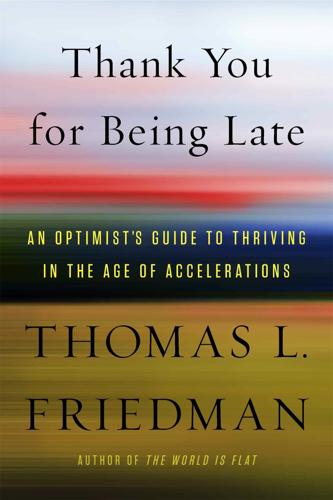
Thank You for Being Late: An Optimist's Guide to Thriving in the Age of Accelerations
by
Thomas L. Friedman
Published 22 Nov 2016
The king agreed, noted Brynjolfsson and McAfee—without realizing that sixty-three instances of doubling yields a fantastically big number: something like eighteen quintillion grains of rice. That is the power of exponential change. When you keep doubling something for fifty years you start to get to some very big numbers, and eventually you start to see some very funky things that you have never seen before. The authors argued that Moore’s law just entered the “second half of the chessboard,” where the doubling has gotten so big and fast we’re starting to see stuff that is fundamentally different in power and capability from anything we have seen before—self-driving cars, computers that can think on their own and beat any human in chess or Jeopardy! or even Go, a 2,500-year-old board game considered vastly more complicated than chess.
…
So, at one level, my view of the Machine today is built on the shoulders of Brynjolfsson and McAfee’s fundamental insight into how the steady acceleration in Moore’s law has affected technology—but I think the Machine today is even more complicated. That’s because it’s not just pure technological change that has hit the second half of the chessboard. It is also two other giant forces: accelerations in the Market and in Mother Nature. “The Market” is my shorthand for the acceleration of globalization. That is, global flows of commerce, finance, credit, social networks, and connectivity generally are weaving markets, media, central banks, companies, schools, communities, and individuals more tightly together than ever.
…
Within a decade, a computer able to process 1.8 teraflops went from being something that could only be made by the world’s richest government for purposes at the furthest reaches of computational possibility, to something a teenager could reasonably expect to find under the Christmas tree. Now that Moore’s law has entered the second half of the chessboard, how much farther can it go? A microchip, or chip, as we said, is made up of transistors, which are tiny switches; these switches are connected by tiny copper wires that act like pipes through which electrons flow. The way a chip operates is that you push electrons as fast as possible through many copper wires on a single chip.
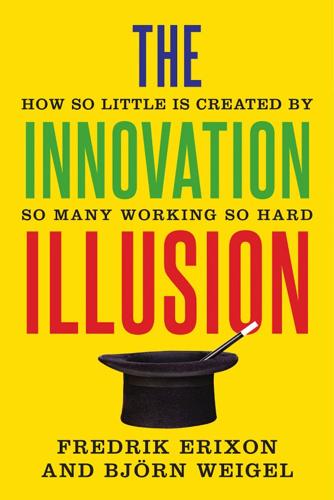
The Innovation Illusion: How So Little Is Created by So Many Working So Hard
by
Fredrik Erixon
and
Bjorn Weigel
Published 3 Oct 2016
., “Job Satisfaction.” 4.Blanchflower and Oswald, “Well-Being, Insecurity, and the Decline of American Job Satisfaction.” 5.Crabtree, “Worldwide, 13% of Employees Are Engaged at Work.” 6.Dreyer and Hindley, “Trade in Information Technology Goods.” 7.The Economist, “Planet of the Phones.” 8.Bogost, “The Secret History of the Robot Car.” 9.The “second half of the chessboard” is an expression by Ray Kurzweil to explain the power of exponential growth. Legend has it that when the inventor of chess presented the game to the emperor of India and was offered to choose a reward, he asked for one grain of rice on the first square, two on the second, four on the third, and so one. The emperor found the request modest but accepted it. It was not until they got to the second half of the chessboard that the emperor realised where it would end. At the sixty-fourth square, the pile of rise equaled the size of Mount Everest. 10.Nietzsche, Thus Spoke Zarathustra, 41. 11.Levy, Love and Sex with Robots. 12.Holley, “Apple Co-founder on Artificial Intelligence.” 13.Romm, “Americans Are More Afraid of Robots Than Death.” 14.Smith and Anderson, “AI, Robotics, and the Future of Jobs.” 15.This section on Stafford Beer and Project Cybersyn builds on Medina, Cybernetic Revolutionaries. 16.Medina, Cybernetic Revolutionaries, 25. 17.Morozov, “The Planning Machine.” 18.Huebner, “A Possible Declining Trend for Worldwide Innovation,” 985. 19.Taleb, Antifragile. 20.Kelly, “The New Socialism.” 21.Mason, Postcapitalism. 22.The Economist, “Caught in the Net.” 23.Gilder, Microcosm. 24.Carswell, The End of Politics and the Birth of iDemocracy. 25.Fukuyama, The End of History, 98–108. 26.Kaminsky, “Iran’s Twitter Revolution.” 27.Nixon, “Lack of Innovation Leaves EU Trailing.” 28.OECD, “Territorial Review: Stockholm, Sweden 2006.” 29.Legrain, European Spring, 367. 30.Gordon, “Secular Stagnation.” 31.Gage, “The Venture Capital Secret.” 32.Marmer et al., “Startup Genome Report Extra,” 10. 33.Schumpeter’s vision of capitalism is explained in Schumpeter, The Theory of Economic Development and, in a different way, in Schumpeter, Capitalism, Socialism, and Democracy. 34.For a discerning analysis of the similarities between Marx and Schumpeter, see Elliott, “Marx and Schumpeter on Capitalism’s Creative Destruction.” 35.Schumpeter, Capitalism, Socialism, and Democracy (1992), 61. 36.To avoid repetition in the book we will use terms like contestable innovation, big innovation, radical innovation, or game-changing innovation to describe the same phenomenon: innovation that contests markets. 37.Mokyr, “Long-Term Economic Growth and the History of Technology,” 4. 38.Broadberry et al., British Economic Growth. 39.Clark, A Farewell to Alms, 1. 40.Phelps, Mass Flourishing. 41.Our version of modern capitalism and its birth draws on several scholars such as Gregory Clark, David Landes, Joel Mokyr, and Edmund Phelps.
…
If you are worried about colon cancer, you no longer have to wait for an appointment with a cancer specialist: you can use PillCam’s digestive tract sensor to screen for it. Electronic devices will soon be able to communicate with each other and perform everyday services in real time, without our command or even knowledge. Data, like money, never sleeps. When it reaches the “second half of the chessboard,”9 to use a phrase from techno-futurists, the exponential growth of computer capacity can disrupt life, technology, and markets far faster than in the past. Experts quarrel about the exact date, but in a few decades they say we will reach the point of technological singularity. That is when artificial intelligence (AI) will outsmart human intelligence.
…
(i)n17 savings aggregate (i) corporate (cash hoarding) (i), (ii), (iii), (iv), (v) retirement (i), (ii), (iii), (iv), (v), (vi), (vii) Schmidt, Eric (i) Schumpeter, Joseph (i), (ii), (iii), (iv) Schumpeterian innovation (i), (ii) “scientific civilization” thinking, and planning (i) scientific research (i) see also R&D; research Scrooge character (i) “second half of the chessboard” (Ray Kurzweil) (i) Second Machine Age, The (Brynjolfsson and McAfee) (i), (ii) Second World countries, and globalization (i) Seinfeld (TV series) Art Vandelay and “importer-exporter” conversation (i), (ii) “Art Vandelay logistics operation” (i) self-driving vehicles see driverless vehicles self-regulation (i) Sellers, Peter (i) Servan-Schreiber, Jean-Jacques, Le Défi américain (The American Challenge) (i) services and globalization (i) and market contestability (i), (ii) and second unbundling of production (i) see also online services “servicification” (or “servitization”) (i), (ii) SetPoint nerve stimulator (i) shale gas, and regulation in Europe (i) shareholders (i), (ii), (iii), (iv), (v), (vi), (vii) shares buybacks (i), (ii), (iii), (iv) share/stock structures (i) see also stock markets Shelley, Percy Bysshe, Prometheus Unbound (i) shipping containers (i) short-termism (i) Sidecar (i) SIFIs (systemically important financial institutions) (i) Silicon Valley (i), (ii), (iii) silo curse (i) Silvia, John (i) Simons, Bright (i) Simphal, Thibaud (i) Sinclair, Clive (i) Sinn, Hans-Werner, “bazaar economy” (i) size see corporate size skill deficiencies, and productivity (i) Skype (i), (ii) Slyngstad, Yngve (i) smartphones (i), (ii), (iii), (iv) Smith, Adam economy of specialization (i) labor and wealth (i) “man of system” (i) The Wealth of Nations (i), (ii) Smiths, The (rock band), “hang the DJ” lyric (i) social democratic vision (i) social regulation (i), (ii) socialism and bureaucracy (i) and community-generated content (i) corporate socialism (i), (ii) and Cybersyn project (i) and death of capitalism utopia (i) and labor vs. work (i) market socialism (i) and open source technology (i) socialist planning (i) and Swedish hybrid economy (i) Söderberg, Hjalmar (i) software technology, and regulation (i) Sombart, Werner (i) Sony (i), (ii), (iii), (iv), (v) sourdough production, history of (i) South Africa, taxi services and regulation (i) South Korea “Asian Tiger” (i) R&D spending (i) Sovereign Wealth Fund Institute (i) sovereign wealth funds (SWFs) (i), (ii), (iii) “Soviet–Harvard illusion” (Nassim Nicholas Taleb) (i) space flights, commercial (i) SpaceX (i) Spain biofuels regulation (i) and diffusion of innovations (i) and globalization (i) left-wing populism (i) lesser dependence on larger enterprises (i) pensions (i) public debt (i) taxi services and regulation (i) specialization and corporate control (i) and creative destruction (i) and deregulation (i) and firm boundaries (i), (ii), (iii), (iv), (v) and globalization (i), (ii), (iii), (iv), (v), (vi), (vii) and innovation (i), (ii), (iii), (iv) and organization (i) and sunk costs (i), (ii) vertical (i), (ii) speech codes, in universities (i) staff turnover rates, and economic dynamism (i) Stanford University (i), (ii) Star Trek (TV series) (i) start-ups (i), (ii), (iii), (iv), (v) Startup Genome Report (i) statistics see recorded data (national accounts) Statoil (i) Stein, Gertrude, “there is no there there” quote (i) Stern, Ariel Dora (i) stock markets changing role of (i) and corporate politics (i) post-financial crisis growth (i) and sovereign wealth funds (i) see also shareholders; shares stockholding periods (i), (ii), (iii) strategic management (i) strategic planning (i) strategy, and managerialism (i) Stratos pacemaker (i) subprime mortgage crisis (US) (i) see also financial crisis (2007) subsidies domestic companies (i) US firms (i) sunk costs (i), (ii), (iii), (iv) Sunstein, Cass (i) supply chains fragmentation of (i), (ii), (iii), (iv), (v), (vi), (vii) German-Central European supply chain (i), (ii) globalization of (i), (ii) and market concentration (i) marketization of (i) and multinationals (i) and Nokia (i) outsourcing of (i) and private standards (i) see also value chains Sweden corporate renewal levels (i) economic situation: 1970s–1980s (i); globalization and post-financial crisis (i) productivity and incomes (i) services and globalization (i) sourdough hotel (Stockholm) (i) state telecommunication monopoly and mobile technology (i) SWFs (sovereign wealth funds) (i), (ii), (iii) SWOT analyses (i) systemically important financial institutions (SIFIs) (i) Tabarrok, Alex (i) tablets (i), (ii) Taibbi, Matt, “Why Isn’t Wall Street in Jail?”
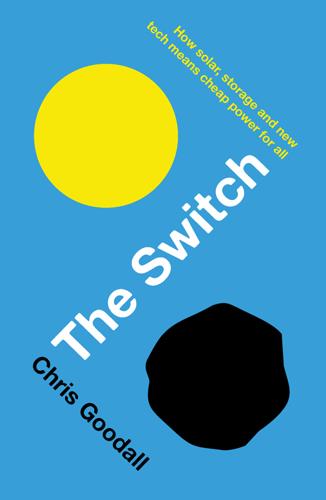
The Switch: How Solar, Storage and New Tech Means Cheap Power for All
by
Chris Goodall
Published 6 Jul 2016
The king never reached the 64th and final square because by that time the amount of rice would have exceeded total world production by a factor of 1,000. Like most humans, he’d been unable to foresee the impact of continuous compound growth. Some futurists note the importance of this deficiency in our psychology. They refer to it as the ‘second half of the chessboard’ problem. While we can envisage the impact of the doublings on the first few squares from a very small beginning, we do not have the ability to comprehend what will inevitably happen as the exponential growth continues. Solar power is still in the first few squares of the chessboard and none of us can yet see that continued rapid growth will eventually completely change the shape of the world energy system.
…
Index A Abramovitz, Yosef 64 absorption chilling 146 acetogens 242–3 Actinomyces 215 Africa food production 134 solar power 60–4 see also individual countries AGL 7 agriculture pumping operations 56–7 UK 226–7 Ainsworth, David 197–8, 199 air, carbon capture 249–54 air travel 224–5 algae 244–5 Algenol 245–6 alkanes 223 aluminium 108 American Physical Society 252 amine absorption 250 ammonia 229–30 anaerobic digestion (AD) 5, 131, 132, 135–41 Andasol 117 Andhra Pradesh 54 Apple 66, 67, 108 Arcelor Mittal 155, 243 archaea 234–5 Argonne National Laboratory 194 Arriba 154 artificial photosynthesis 246–9 asphalt 153 Atacama desert 59 Audi 232 Austin, Texas 53 Australia domestic electricity consumption 260 tracking 96 B bacteria 247–9 Bangladesh 16–17 banks funding solar 105, 106–7 interest rates 98–100 solar power predictions 50–1 batteries 5–6, 173, 240 car batteries 190–2 cost declines 44, 173, 176–9, 256 and demand charges 192–3 domestic 57, 171, 181–5 drones 185–7 flow batteries 174, 201–3, 206 grid storage 44, 187–90, 206–7, 219–20 lithium air 198–9 lithium ion 173–96, 199–201, 210 lithium sulphur 197–8 long term targets 194–5 PV plus battery 199–201 and time-of-use-pricing 162 24M 179–80 zinc-air batteries 201, 203–4 Becquerel, Edmond 74 behind the meter schemes 107, 108 Belgium demand response 152 liquid hydrocarbons 243 Bickl, Thomas 85, 86–90 biochar 225 biofuels see liquid fuels biogas Electrochaea 233–6 Tropical Power 134–41 see also carbon dioxide; methane biological methanation 233–8 biomass 13, 14, 15, 131–4, 142–6, 256 power to gas 233–8, 240 storing liquid hydrocarbons 220, 221–7 Tropical Power 135–42 Bishop, Pete 185–9 Bissell, David 200 Bloch, Mathias 181–2 Bloomberg 35, 42, 53, 60, 178 blue-green algae 244–5 Boardman, Brenda 164–5 Boston Consulting Group (BCG) 18, 19, 20, 176, 177, 178–9 BP 12–13 Bradford, Travis 22, 48–50 Brandao, Rafael 60 Brazil biofuels 223 pylon lines 120 solar electricity prices 3, 60 Breakthrough Energy Coalition 214, 244 Britwind 130–1 Bruce, Peter 198–9 Buffett, Warren 177 Burundi 64 Butler, Nick 41–2, 44 BYD 176–7 C Calgary 253 California demand response 156–8 domestic electricity storage 184 grid storage 201 power to gas 233 renewable energy 35 solar power cost 3 time-of-use-pricing 162, 163 CAM (Crassulacean Acid Metabolism) plants 135–41, 142–5 Cambridge Architectural Research 166 Canada air capture of CO2 253 demand response 154 grid batteries 202 time-of-use-pricing 159 carbon dioxide (CO2) air capture 213, 249–54 artificial photosynthesis 248 cement plants 238–40 diesel generators 149 and microbes 213, 215 plants 133, 135, 137 power to gas 232, 233 using to make liquid hydrocarbons 241, 243, 244–5, 246, 256 Carbon Engineering 253 carbon monoxide 241–2, 243 carbon tax 239, 253 cars component manufacturers 127–8 energy usage 11 hydrogen 228 PV film 89–90 see also electric cars Case, Chris 68–71, 73–4, 79–83 cement factories 238–40, 245 Chiang, Yet-Ming 179–80 Chile concentrating solar power 119 pylon lines 120 solar electricity prices 3 solar power 59–60 China coal-fired power stations 35 energy demand 11, 12 liquid hydrocarbons 243 solar power 24, 53–4, 66 and Zimbabwe 64 Chu, Steven 230 CIGS (copper indium gallium selenide) 90 Citibank 51 Climeworks 250–3 Clinton, Hillary 54 Clostridium Autoethanogenum 242–3 coal 40 Germany 46 Nigeria 60–1 coal-fired power stations Chile 59 China 11, 35 cost 122 demand 36–7 in developing world 58 India 55, 56, 58 move away from 7 Coal India Limited 58 Combined Cycle Gas Turbine (CCGT) plants 34–5, 37, 39, 40, 236 Committee on Climate Change (CCC) 47–8 compound growth 30–1 compressed air storage 207–8 concentrating solar power (CSP) 116, 117–21, 256 Connolly, Steve 154 conversion efficiency 73, 76–7, 78–9, 80 Cook, Tim 67 Cool Planet 225–6, 241 Cornwall 104–5, 206 cows 139–40 Crabtree, George 194, 195 Crescent Dunes 118 cyanobacteria 244–5 D demand charges 192–3 demand response 149–55, 166, 232, 237–8 and energy efficiency 163 in the home 156–8 what happens next 158–63 Denmark power to gas 233–4, 235 solar electricity costs 45 wind power 116, 124, 234 Deutsche Bank 51, 59, 176 diesel generators 57, 60, 121, 185, 199 demand response 148–9, 151 Hawaii 161, 199 Dinorwig 205 dispatchable power 199–200 Drax power station 131, 132 drones 185–7 Dubai 52 E Easter Island 133 Easton, Roger L 2 Einstein, Albert 75 Eisenberger, Peter 3, 19–20 electric cars 12, 156, 158, 224–5 batteries 173–8, 195 as grid backup 190–2 electricity 255 cutting power demand in the home 156–8 demand and supply 4, 5, 37–9, 147, 150–1, 215, 216–20 demand charges 192–3 demand response 149–55, 158–63, 166, 232, 237–8 distribution costs 55 domestic consumption 259–60 lighting 164–6 microgrids 62–3 power to gas 231–40 prices 37–8, 107, 257 storage 4–6, 43, 44, 173–254 time-of-use-pricing 158–63 transmission networks 58, 59, 61 see also solar power Electrochaea 233–40 electrolysis 220, 227–30, 231–40, 252–3 electrons 74–6, 78–9, 201 Enbala 154 Energiesprong 167–71 energy demand for 9–13, 144 and power 259–60 energy efficiency and demand response 163 insulation 167–72 lighting 165–6 Engie 7 Enterococcus 215 Entrade 145–6 Eos 203–4 EPR 15 ethanol 223, 243–5 Euphorbia Tirucalli 135, 137 experience curve 18–19, 33 batteries 175, 176–9, 187, 210 inverters 97 photovoltaics 22, 26, 30–1, 33 transistors 31–2 wind power 123 Exxon 3, 19–20 F Facebook 185–7 Farmer, Doyne 33 Fischer-Tropsch process 223, 252 Florida 245–6 flow batteries 174, 201–3, 206 food 132–4 Food and Agricultural Organisation (FAO) 142–3 fossil fuels 27–9, 33–40 see also coal; gas; oil France demand response 152, 155 gas grid 231–2 nuclear power 23 Fraunhofer Institute 3–4, 46–7, 104 Fritts, Charles 74 fullerene 72 G gas 7, 40 grid 231–2 power to gas 6, 213–15, 231–40 see also biogas; methane; syngas gas-fired power stations 150–1 ammonia 229 cost 4, 122 financing 34–5, 36–7, 39, 40, 99 power to gas 236, 238 US 35 gasification 132, 145–6 Gates, Bill 1, 6, 208, 214–15, 244, 255 Gebald, Christoph 252, 253 gene sequencing 18–19 geothermal 59, 108 Germany domestic electricity storage 181–5 electricity demand and supply 215, 217, 218–20, 229–30, 237 electricity price 101, 260 electricity production 260 gas grid 228–9, 231–2 hydrogen 228–9 oil storage 230 power to gas 232 solar power cost 3–4, 46–7 solar power funding 104, 106, 107 wind power 124 Ghent 243 gigawatt hours 260 gigawatts 259, 260 GM 176–7, 198 Google 66, 225 governments 6, 189 solar power tenders 51–3, 54–5, 59, 60 subsidies 50, 107–8, 126 GranBio 223 graphene 187 Greencoat Capital 109 grid integration costs 55–6 grid storage flow and zinc-air batteries 201–4 pumped hydro 205–7 PV plus battery 199–201 South Korea 204 GTM Research 96–7, 193, 201 H Haber Bosch process 229 Hafenbradl, Doris 238–9 Handelsbanken 105 Hawaii 161–2, 184, 199–201 heat pumps 12, 167 heating 12, 167 Heliatek 84–90 Helio100 120–1 heliostats 117–18 Henderson, Bruce 18, 20 Highview Power 208–10 Hinwil 250–1 Hinkley Point 15 Hofstetter, Dominic 233–6 hospitals 148, 149 houses batteries 57, 181–5 heating 12, 167 insulation 167–72 lighting 12, 164–6, 169 Solar House 57–8 see also residential PV installations Hutcheson, Dan 32 hydro-electric power 14, 15, 141–2, 159 pumped hydro 204–7 hydrogen 5, 213–15 conversion to methane 221, 231–40, 256 using electrolysis to generate 212, 220, 227–31, 252–3, 256 Hydrogenics 235 Hymind floating turbines 125–6 I Ibbenbeuren 229 Iceland 108 IKEA 19, 66, 166 Imergy 202 India coal-fired power stations 55–6, 58 solar electricity prices 3 Solar Houses 57–8 solar power 24, 53–8 insulation 167–72 Intel 20 interest rates 98–100, 101–2 International Energy Agency (IEA) 42–3, 45–6 inverters 91–5, 96, 97 investment 4, 100–14, 115, 214 corporate 66–7, 108 Investment and Pensions Europe 102 ITM Power 228–9 J Jelley, Nick 25 Joule Unlimited 244–5 K Kaua’i 199–200 Keith, David 253 Kennedy, Danny 42 Kenya 62–4, 145 Tropical Power 134–42 kilowatt hours 259 kilowatts 259–60 Kisii 62–3 Kiwi Power 149 Klein, Nina 71–3, 74, 85–6 Kohn, Rick 213, 215, 246 KPMG 54–7 L Lafond, Francois 33 Laikipia 135–41 Lancashire County Council 102, 103 Lanzatech 241–4 Lawrence Berkeley Laboratory (LBL) 46, 65 lead 83 learning curve 19, 23 LEDs 165–6, 169 Leggett, Jeremy 50 Lemnacae 139 levelised cost 98–101 LeVine, Steve 180 Liebreich, Michael 178 lighting 12, 164–6, 169 Lightsail 207–8 lignite 46 liquid air storage 208–10 liquid fuels 5, 6, 213–15 from biomass 220, 221–7 using microbes 221, 240–6, 256–7 lithium air batteries 198–9 lithium ion batteries 173–6, 192–5, 210 car batteries 190–2 cost declines 176–9 domestic 181–5 energy density 195 large-scale 185–90, 199–201 lithium supply 195–6 recycling 195, 196 24M 179–80 lithium sulphur batteries 197–8 Louisiana 226 M M-Pesa 63 MacKay, David 259 Madhya Pradesh 54 Manchester 39, 209 Mason, Mike 137–42, 143, 144 megawatts 259 Mermans, Pieter-Jan 38, 149–53, 155 Meteo 91 methane 131, 135, 137, 213–16 power to gas 221, 231–40, 256 methyl ammonium lead halides 80 microbes 212–15 artificial photosynthesis 247–9 making liquid hydrocarbons 221, 240–6, 256 power to gas 233–40 microgrids 62–3 mobile phones 61–2, 63–4, 185 Modi, Narendra 53 Monbiot, George 226 Moody’s 173, 193 Moore, Gordon 20 Moore’s Law 20–1, 32 Morocco 116, 119–20 Moylan, Andy 111–13 multi-junction cells 76–7 Musk, Elon 175 N Naam, Ramez 49–50 Nelson, Jenny 75 Netherlands home improvements 169, 170–1 storage in car batteries 191 Nevada 53, 118 New Mexico 244–5 NexWafe 78, 79 Nigeria 60–2 Nissan 176 Nissan LEAF 156 Nourse, Richard 109, 122 nuclear power stations 6, 15 costs 22–3, 48, 122 O Oahu 161–2 O’Dea, Christopher 103 offshore wind turbines 15, 124–6 Ohl, Russell 75 OhmConnect 156–8 oil, storage 230, 240–1 oil companies 6, 7–8 oligomer cells 84–90 onshore wind turbines 22, 122–5 Ontario 159, 202 Open Energi 153 Opuntia ficus-indica 135, 136, 138 Oregon 7, 223–4, 225 organic molecules 71–3, 74 organic photovoltaics 84–90 Osinbajo, Yemi 60–1 Ouarzazate 119 oversizing 91–5 Oxford Photovoltaics 68, 79–84 Oxis 197–8, 240 oxygen 234 P Palmer, Jason 166 Panasonic 175, 187–9 paper mills 152 passivation 78–9 Peabody Energy 40 peak shaving 193 see also time-of-use-pricing Pencil Cactus 135, 137 pension funds 4, 101–4, 106–7, 109–11, 112 pentacene 71 perovskites 68, 79–84 Peterhead 125–6 petrol 240 photons 74–5 photosynthesis artificial 246–9 CAM plants 135–7 photovoltaics, electricity prices 3, 45, 46, 51–3, 59, 60 photovoltaics (PV) 5–6, 8, 42–3, 74–6, 116, 255–8 and alternative sources of energy 33–40 availability 34, 55–6, 94–5, 211–12 Brazil 60 Burundi 64 capital and levelised costs 98–101 Chile 59–60 corporate investment 65–7 cost declines 1, 2–4, 21–33, 42, 45, 46–51, 123–4, 254 daily curve 90–6, 147, 260–1 experience curve 22, 26, 30–33 films 84–90 financing 4, 98–114 Germany 217, 218–20 grid integration costs 56 India 53–8 Kenya 62–4 Nigeria 60–2 oversizing 91–5 and pension funds 101–4 predictions 41–51 PV plus battery 199–201 S curve 25–6 system costs 96–7 and time-of-use-pricing 160–3 UK 215, 216–17 USA 65 Vanguard 1 2 Zimbabwe 64 see also solar cells; solar farms; solar panels PJM 155, 200–1 plants see biomass potassium hydroxide 253 power 259–60 power purchase agreements (PPAs) 51–3, 65, 101 power to gas (P2G) 231–40, 256 Powerhive East Africa Ltd 62–3 PowerOasis 185–90 Preqin 111–13 Prickly Pear 135, 136, 138 Primus Power 199 private electricity generators 148–9 pumped hydro 204–7 Punjab 54 pyrolysis 225–6 Q quantum dots 73 Quarry Battery 205–7 R Raizen 223 Red Rock Biofuels 223–4, 225, 241 renewable energy 13–15 see also geothermal; hydro-electric power; solar power; wind power residential PV installations investment 66, 100–1, 107, 110–11 PV film 89 storage 181–5 system costs 96–7 REstore 38–9, 149–55, 158 Robertson, Andrew 103, 112 Rombouts, Jan-Willem 151, 152 Roulstone, Tony 23 Rudd, Amber 40 Russia 226 S S curve 25–6 Sabatier reaction 231 Sainsbury’s 66 Schellnhuber, John 41 Schmickler, Arno 168, 170, 171 Schneider Electric 157–8 Scotland carbon-neutral housing 171 drones 186–7 wind power 122 seawater 245–6 second glass problem 43 second half of the chessboard problem 30–1 semiconductors 18 Sermol, Peter 110–11 sewage farms 154 Shao, Vic 193 Shell 7–8, 41, 43, 223 Siemens 235, 243 silicon 68, 73, 75, 76, 84, 87–8, 195 efficiency 78–9 manufacturing techniques 77–9 tandem cells 81–4 Silicor 108 smart meters 157, 159 Smil, Vaclav 255, 257 Snaith, Henry 80, 81 SoCalGas 233 solar cells 69–70 efficiency 74–7, 78–9 from organic molecules 71–3 history 74–6 multi-junction 76–7 oligomers 84–90 passivation 78–9 perovskite 79–84 silicon 76 solar energy 9–10 solar farms Brazil 60 China 66 costs 48–51, 97 electricity prices 3, 45, 46, 51–3, 54, 55, 59, 60 financing 4, 66, 98–114 and hydro-electric dams 141–2 India 54, 55, 57 land needed for 15–18 oversizing 91–5 shading 141 tracking 95–6 US 3 Zimbabwe 64 solar fuels 213–15 Solar Houses 57–8 solar panels Chris Case 68–71, 73–4 cost declines 4, 21–2, 23–4, 49, 73–4, 77–9 daily curve 260–1 efficiency 76–7 history 74–6 lifetime of 114–15 manufacturing volumes 24 organic molecules 71–3 oversizing 91–5 perovskites 68, 79–84 technology improvements 68–97 tracking 91, 95–6 see also solar cells solar power 1–8, 13–14 concentrating solar power 117–21 see also photovoltaics SolarCity 66, 199 SolarReserve 119 Solexel 78, 79 Sonnen 181–5 Sony 179 South Africa blackouts 183 concentrating solar power 119–21 Fischer-Tropsch refineries 223 tracking 96 South Korea 204 Spain 117, 120 Spinetic 127–30 Sporomusa Ovata 247–8 Statoil 125–6 steelworks 242, 243–4, 245 Stellenbosch University 120 storage 4–6, 13, 43, 44, 94, 104, 116, 173, 210 air capture of CO2 249–54 artificial photosynthesis 246–9 compressed and liquid air storage 207–10 concentrating solar power 117–19, 121 as gas or liquids 220–54, 256–7 methane 135 need for long-term storage 216–20 pumped hydro 204–7 and time-of-use-pricing 162 see also batteries subsidies 50, 107–8, 126 SunEdison 54 SunShot 65 Swanson’s Law 21–2, 23–4 Switzerland 250–1 syngas 145, 223–4, 225, 252 system costs 96–7 T Taiwan 243 tandem cells 81–4 Tarmac 153 Telangana 54 terawatt hours 259, 260 terawatts 259 Tesla 127, 175 batteries 5, 176, 177, 178 Gigafactory 175–6, 177, 180 Powerall 162, 175, 181 Texas 123 Thiel, Peter 8, 208 time-of-use-pricing 158–63 tracking 91, 95–6 transistors 20–1, 31–2 trees see biomass Trina Solar 79, 115 Tropical Power 134–42, 145 24M 179–80 U UK biogas 236 biomass 145–6 daily solar power curve 260–1 demand response 152, 153, 154 electricity demand and supply 148, 164–5, 215, 216–18, 237 electricity price 4, 37–8, 101, 260 Energiesprong 170, 171 energy use 11–12 fossil fuel generation demand 36–7 funding 102–7, 108–10 gas-fired power stations 39 government bonds 101–2 insulation 167 land use 16, 17, 226–7 liquid air storage 208–10 nuclear power stations 23 oil storage 230, 240–1 pension funds 102–4, 106–7, 108–10 pumped hydro 205–7 seasonal deficit 211–12 solar costs 45, 47–8, 52 solar power 24, 36 subsidies 50, 108 time-of-use-pricing 159–60, 162 utility companies 7 willow coppicing 136 wind power 4, 15, 122–3, 124, 125–6, 130 Unilever 66, 108 United States (US) batteries 194, 240 biomass refining 223–4, 225–6 blackouts 183 demand charges 193 demand response 155, 156–8 domestic electricity consumption 260 domestic electricity storage 184 electricity price 3, 52–3 energy demand 11 gas-fired power stations 35, 40 government bonds 101–2 land use 17–18 large-scale grid storage 199–201 power to gas 232–3 solar power 24, 33, 54, 65 system costs 97 time-of-use-pricing 161–2 tracking 96 utility companies 7 wind power 33, 122, 123 United States Geological Service (USGS) 196 University of California, Berkeley 247–8 University of Dresden 84 University of New South Wales 79 utility companies 6, 7, 34–6 Utrecht 191 V van Beurden, Ben 41, 43, 258 vanadium 202–3 Vanguard 1 2 vertical wind turbines 127–30 W Wadebridge 160–1 Wales 226–7 Walmart 66, 67, 108 waste water treatment plants demand response 154 power to gas 233, 234–5 wave power 13, 14 weather forecasting 91, 141, 183 Weil, Bill 105–9 Werlte 232 West Country Renewables 104–5 Westmill Solar 102, 103 Williams, Gage 104–5, 106 Willis, Kathy 142 willow coppicing 136 wind power 5, 13, 14–15, 53, 116, 122–6, 256 Chile 59 cost declines 22 Denmark 116, 124, 234 Germany 124, 217, 218–20 UK 215, 216–17, 237 US 33 wind turbines 4, 123–5 Britwind 130–1 Hymind floating turbine 125–6 Spinetic 126–31 vertical turbines 127–30 wood 131, 132 see also biomass Wright, T.P. 19 Y Yang, Peidong 248–9 Z Zimbabwe, solar power 64 zinc-air batteries 201, 203–4 Zurich Federal Institute of Technology 250 ALSO AVAILABLE FROM PROFILE BOOKS Where Do Camels Belong?
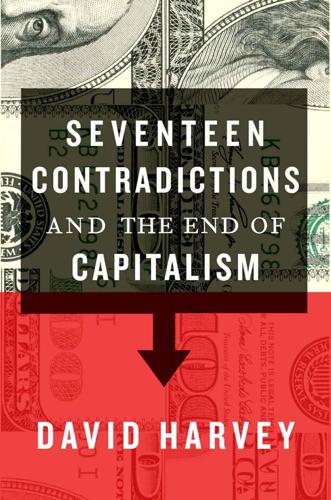
Seventeen Contradictions and the End of Capitalism
by
David Harvey
Published 3 Apr 2014
The decline then accelerates and over the last two or three years the principal diminishes very rapidly. There are a number of classic anecdotes to illustrate this quality of compounding interest and exponential growth. An Indian king wished to reward the inventor of the game of chess. The inventor asked for one grain of rice on the first square of the chessboard and that the amount be doubled from one square to the next until all the squares were covered. The king readily agreed, since it seemed a small price to pay. The trouble was that by the time it came to the twenty-first square more than a million grains were required and after the forty-first square (which required more than a trillion grains) there simply was not enough rice in the world to cover the remaining squares.
…
To keep to a satisfactory growth rate right now would mean finding profitable investment opportunities for an extra nearly $2 trillion compared to the ‘mere’ $6 billion that was needed in 1970. By the time 2030 rolls around, when estimates suggest the global economy should be more than $96 trillion, profitable investment opportunities of close to $3 trillion will be needed. Thereafter the numbers become astronomical. It is as if we are on the twenty-first square of the chessboard and cannot get off. It just does not look a feasible growth trajectory, at least from where we sit now. Imagined physically, the enormous expansions in physical infrastructures, in urbanisation, in workforces, in consumption and in production capacities that have occurred since the 1970s until now will have to be dwarfed into insignificance over the coming generation if the compound rate of capital accumulation is to be maintained.
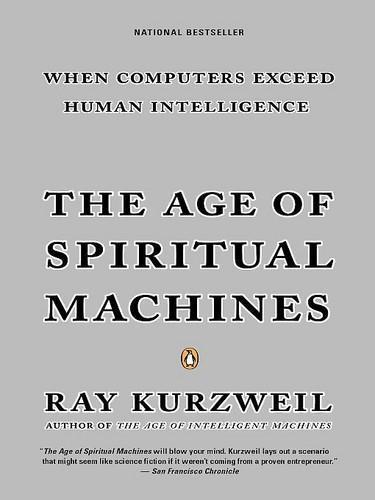
The Age of Spiritual Machines: When Computers Exceed Human Intelligence
by
Ray Kurzweil
Published 31 Dec 1998
And the inventor could still retain his head. It was as they headed into the second half of the chessboard that at least one of them got into trouble. So where do we stand now? There have been about thirty-two doublings of speed and capacity since the first operating computers were built in the 1940s. Where we stand right now is that we have finished the first half of the chessboard. And, indeed, people are starting to take notice. Now, as we head into the next century, we are heading into the second half of the chessboard. And this is where things start to get interesting. OKAY, LET ME GET THIS STRAIGHT, MY CONCEPTION AS A FERTILIZED EGG WAS LIKE THE UNIVERSE’S BIG BANG—UH, NO PUN INTENDED—THAT IS, THINGS STARTED OUT HAPPENING VERY FAST, THEN KIND OF SLOWED DOWN, AND NOW THEY’RE REAL SLOW?
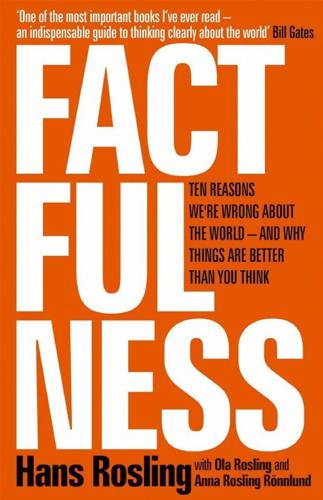
Factfulness: Ten Reasons We're Wrong About the World – and Why Things Are Better Than You Think
by
Hans Rosling
,
Ola Rosling
and
Anna Rosling Rönnlund
Published 2 Apr 2018
As a result, the number of new cases per day was doubling every three weeks. The graph showed how enormous the outbreak would soon become if each infected person kept infecting two more. Doubling is scary! I had first learned about the effect of doubling at school. In the Indian legend, the Lord Krishna asks for one grain of rice on the first square of the chessboard, then two grains on the second square, four grains on the third square, then eight, and so on, doubling the number of grains each time. By the time he gets to the last of the 64 squares, he is owed 18,446,744,073,709,551,615 grains of rice: enough to cover the whole of India with a layer of rice 30 inches deep.
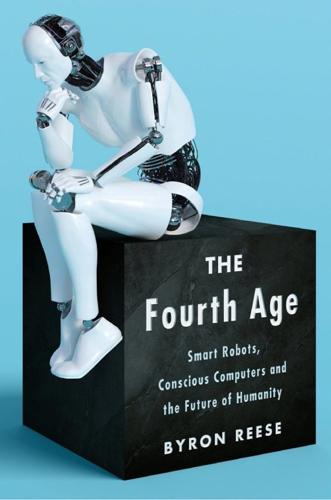
The Fourth Age: Smart Robots, Conscious Computers, and the Future of Humanity
by
Byron Reese
Published 23 Apr 2018
About a thousand years ago, a mathematician in what is today India is said to have brought his creation to the ruler, and showed him how the game was played. The ruler, quite impressed, asked the mathematician what he wanted for a reward. The mathematician responded that he was a humble man and his needs were few. He simply asked that a single grain of rice be placed on the first square of the chessboard. Then two on the second, four on the third, each square doubling along the way. All he wanted was the rice that would be on the sixty-fourth square. So how much rice do you think this is? Given my setup to the story, you know it will be a big number. But just imagine what that much rice would look like.

The Road Ahead
by
Bill Gates
,
Nathan Myhrvold
and
Peter Rinearson
Published 15 Nov 1995
No experience in our everyday life prepares us for the implications of a number that doubles a great number of times—exponential improvements. One way to understand it is with a fable. King Shirham of India was so pleased when one of his ministers invented the game of chess that he asked the man to name any reward. "Your Majesty," said the minister, "I ask that you give me one grain of wheat for the first square of the chessboard, two grains for the second square, four grains for the third, and so on, doubling the number of grains each time until all sixty-four squares are accounted for." The king was moved by the modesty of the request and called for a bag of wheat. The king asked that the promised grains be counted out onto the chessboard.
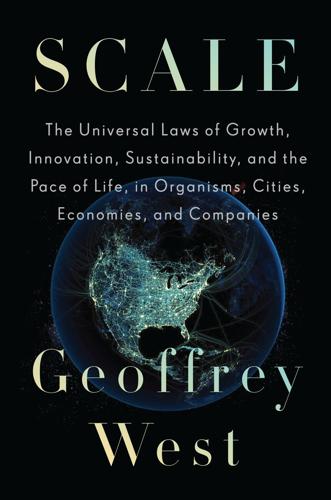
Scale: The Universal Laws of Growth, Innovation, Sustainability, and the Pace of Life in Organisms, Cities, Economies, and Companies
by
Geoffrey West
Published 15 May 2017
Here’s a version of the story: When the inventor of chess showed the game to the king, the ruler was so taken by it that he asked the inventor to name his reward for creating such a marvelous and challenging game. The man, who was mathematically inclined, asked the king for what seemed to be an extremely modest reward in the form of grains of rice. However, these were to be apportioned in the following manner: he would receive 1 grain of rice on the first square of the chessboard, 2 grains on the second, 4 on the third, 8 on the fourth, 16 on the fifth, and so on, doubling the amount for each progressive square. The king, though somewhat offended by such an apparently measly response to his very generous offer, reluctantly accepted the inventor’s request and ordered the treasurer to count out the grains of rice as prescribed by the inventor.

The Technology Trap: Capital, Labor, and Power in the Age of Automation
by
Carl Benedikt Frey
Published 17 Jun 2019
To learn, AlphaGo first watched previously played professional Go games, and then it played millions of games against itself, steadily improving its performance. Its training data set, consisting of thirty million board positions reached by 160,000 professional players, was far greater than the experience any professional player could accumulate in a lifetime. The event marks what Erik Brynjolfsson and Andrew McAfee have called the “second half of the chessboard.”5 As Scientific American marveled, “An era is over and a new one is beginning. The methods underlying AlphaGo, and its recent victory, have huge implications for the future of machine intelligence.”6 Deep Blue may have beaten Kasparov at chess. But ironically, at any other task, Kasparov would have won.